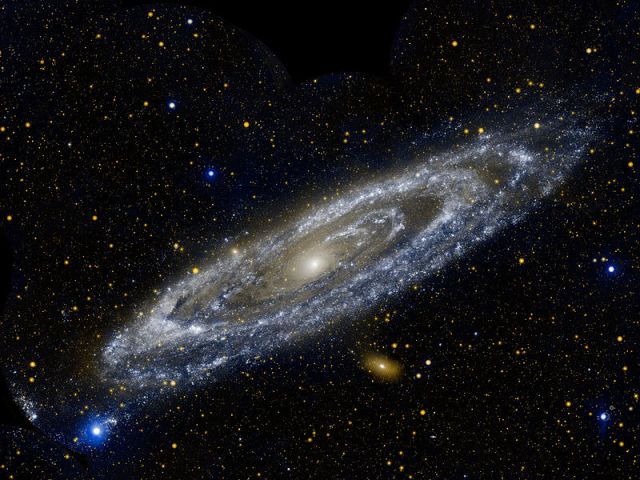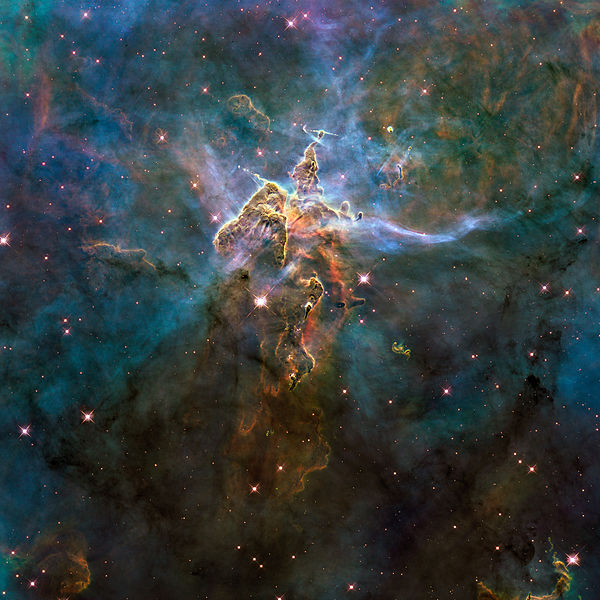
Cixin Liu’s trilogy consists of The Three Body Problem, The Dark Forest, and Death’s End. It is first contact fiction of an abstract bent. Liu’s story is episodic; the trilogy ranges very widely and does not focus on any particular character. Although I read the books happily enough, it’s not easy to say what I liked about them. I suppose I enjoyed them for Liu’s unpredictability and for some dramatic set pieces. Liu does not worry much about the details or even the plausibility of the technological devices he introduces, but the results are entertaining. I won’t try to discuss them without spoilers.
The three body problem is to predict the motions of three bodies, usually celestial, according to the normal laws of gravity and motion. Mathematicians have wrestled with it since the discovery of calculus and it is known that it’s not susceptible to exact solution in all cases. Characteristically, Liu draws a beautiful portrait of a mathematician plagued by restlessness of soul until he loses himself in contemplation of the beauties of this problem. The character does not appear again. Much of the first book takes place in a game world where the problem serves as motivation for a primer in the history of science, and an introduction to an advanced civilization threatened by its location in a ternary star system. Liu’s telling stories within stories reminded me of Ender’s Game, but in a lighter mood. For example, Turing, Newton, and the emperor of China construct a computer out of a vast host of flag waving medieval soldiers, but they cannot predict the motions of the three suns for long. Despots and sages argue with operatic exaggeration while their hapless subjects suffer the indignity of being dehydrated and stored in warehouses to be gnawed on by rats while they wait for the next spell of fair weather in their chaotic planetary system.
Contact between Earth and the Trisolarans is initiated by an astronomer despairing at the worst depths of the Cultural Revolution. Despite this extreme example (and granting the existence of numerous inhabited worlds in the galaxy) Liu handles the question of whether humanity poses a greater threat to itself than the one posed by alien civilizations with subtlety. He makes the conflict between planets nearly intractable; Liu’s strength is spectacular set pieces of utter, beautiful destruction wreaked by enemies capable of manipulating the structure of matter and space. One of the Trisolaran weapons is the sophon: a proton unfolded unfolded from its string theoretical eleven dimensions to form a surface vaster than a planet and etched with computer circuitry. Rerolled, it becomes a smart particle, capable of travel near light speed and instant quantum communication, and able to bring human science to a halt by lurking in particle colliders.

These picture from the Hubble Space Telescope are in the public domain.
Human strife is not a major part of the novels. Panic at imminent alien invasion leads to destruction, but in a madcap register; glassy arcologies tumble down, it’s Lord of the Flies for a little while, but no resentment ensues. It seems to be Liu’s contention that despite the horrors humanity is capable of inflicting on itself, we can and must cooperate to face the universe. But I have to qualify this; as I said, Liu is more subtle than that. Another of Liu’s painstakingly created bit players, after a trying ordeal, communicates vital guidance to earth in the form of a classical fairytale. In the tale, the bad guy destroys his enemies by depicting them in masterly, lifelike paintings. The world’s powers work together to interpret the tale and are nearly successful, but not quite. When a few starships escape the solar system, they carry the same people who advocated most heroically for human solidarity and morality. I wonder if Liu had Thucydides in mind when he wrote of the uncomprehending acrimony that comes between the terrestrial authorities and the spacefarers. It reminded me of the mutinies in the Athenian fleet in Asia, of the zeal with which Athenians prosecuted the leaders of failed campaigns, and the shapeshifting of Alcibiades.
In what I’ve read about the big bang it seems to be a commonplace that conditions early on in the universe were quite different from what we find now. In the dense early universe, fundamental particles, and even laws governing the forces between them, did not take on the different forms we distinguish today. Physicists hope that by understanding the origins of the universe, we might resolve problems like “electroweak symmetry breaking”, or so I’ve read. Or where six or seven or eight extra dimensions got to, presumably. In the struggle to protect themselves from scarcely comprehended threats, Liu has humanity begin to unravel some of these questions of fundamental physics. But it proves to be a tangled web indeed. I’m now desperately trying to remember if and how Penrose, Hawking, et al, have used the words “Eden” or “Edenic”, to describe the early universe, and whether they might have dared to load that term as Liu ultimately does. (To Orson Scott Card’s name, I might add that Liu reminds me of Neal Stephenson and Philip Pullman.) It’s in these terms, of Eden and the big bang, that Liu counterposes the question of facing the universe with that of facing ourselves.
